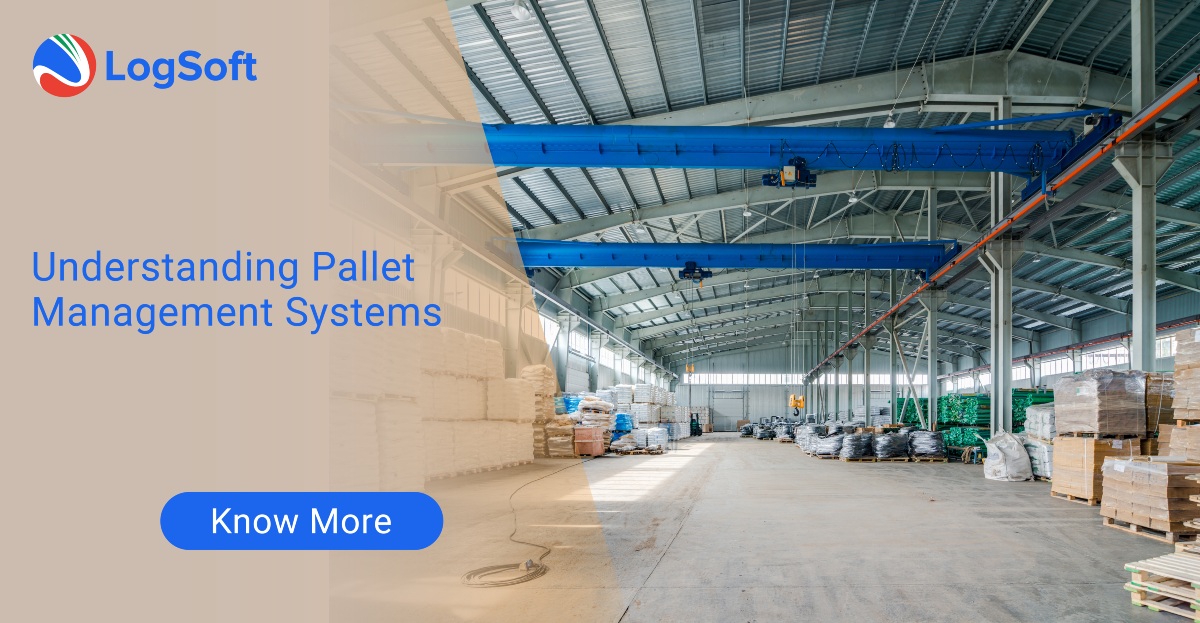Pallet management systems are digital software that facilitate supply chain execution beyond traditional methods. Pallet management systems are now a key component of supply chain management solutions within pallet, crate and container intensive industries.
Adopting a pallet management system makes traditional analogue tracking, traceability and accounting digital and easier to view and control.
Pallet management systems have arisen from the vortex for different reasons and here are 3 of them:
Supply chain execution solutions
Every sector and industry requires warehousing, transportation and other supply chain management systems in place to function smoothly and deliver goods to their consumers.
Pallet management systems fulfil the desires of business owners to have better control over their supply chain by allowing them to track their assets beyond their warehouse walls.
For example, grocery retailers can consider pallet management systems as an extension of their warehouse management systems, to track pallets of products into the store from the distribution centre.
Rise of returnable transit packaging (RTP)
As more businesses are now trying to reduce the cost of disposable packaging, e.g wooden pallets, in their supply chain or are trying to shift to more sustainable practices in response to environmental regulations – many firms are switching to RTP.
Pallet management systems help optimise the maximum circulation of RTP and help in better inventory planning and forecasting delays and movement on the RTP in transit.
Ease of access to the Internet
The rise of pallet management systems is directly powered by the ease of global data distribution through the use of virtual private networks (VPNs) and the Internet.
Pallet management system softwares allows data collected from a pallet management solution to be integrated and used within total supply chain processes. This increases the efficiency of asset delivery and logistics systems leading to improved utilization.
Features and Functions of a Pallet Management Systems?
As an overview of pallet management systems – the solutions cover 3 broad areas: execution, process management and optimization.
Execution
Pallet management systems from a high-level functional view can appear to be the same as warehouse management systems with the major differentiation residing in “product” versus “asset tracking and handling” processes.
Pallet management systems may provide some or all of the following “execution-focused” features and functions;
Inbound
- Pallet Receiving – Empty pallets may be received into the system, creating available pallet inventory.
- Repair and Maintenance – Damaged or out of date assets, may be identified and directed to repair or recycling locations.
- Putaway – Empty, usable assets may be moved to storage locations.
Outbound
- Picking
- Shipping
General
- Pallet Inventory Management
- Pallet Location Management
- Pallet/Content Tracking
Process Management
The process management component of pallet management systems addresses the ability to integrate multiple systems with pallet management systems to provide system-based inputs on pallet location and status (termed “data integration”), identify and provide notification of events tied to pallets, e.g. arrival, non-arrival, overdue (termed “event management”) and finally provide software features to view the location and status of pallets (termed “in-transit” or “static”) on a global basis (termed “visibility”).
Visibility, event management and process integration software tools utilize the data generated by the execution component of pallet management to effect collaborative logistics.
Optimization
A fundamental differentiator between pallet management systems and warehouse management systems is the need for asset-intensive industries to use this data to affect the optimization of pallet utilization.
A pallet management system can be used as a planning solution to optimize the physical movement of pallets and can provide tracking information on in-transit assets.
How do Pallet Management Systems Impact Supply Chain Efficiency?
The benefit of pallet management systems in achieving higher levels of supply chain efficiency is recognized through;
Increased Asset Utilization
Pallet management systems used for tracking pallets improves the availability of pallets while reducing the downtime in the pallet usage life cycle. Pallet management systems can provide critical information to execute advanced decision making on the movement of goods enabling improved supply chain process management thereby saving time or dollars.
Improved Capital Deployment
One of the fundamental problems with pallets is that they may be expensive. Pallet purchase and subsequent depreciation have a significant effect on cash flow, the balance sheet and P&L.
Growing market demand for RTP is forcing substantial capital investment in plastic or other “non-wood” pallets. Protecting this investment and minimizing ongoing investing is a key ROI element of pallet systems.
By adopting a pallet management system businesses can have better control and traceability of the movement of their RTP through the supply chain.
Asset Loss Reduction / Prevention
Pallet loss reduction has a substantial impact on a company’s bottom line. “Loss” consists of non-locatable assets in the supply chain, i.e. unable to be used, as well as true loss. In either case, new assets must be purchased to refill the available pool.
Being able to track and account for the incoming and outgoing pallets, a business can plan their supply chain logistics to minimise loss and maximum RTP circulation and usability.
Maintenance and Repair Cost Reduction
A final benefit of pallet management systems is maintenance cost reduction. Assets require cyclical preventative repair as well as repair for damage in handling. Pallet management systems support the identification of required preventative repair as well as the status control of damaged assets.
Advancements in technology have now made it easier for industries of all sizes to adopt pallet management systems to optimise their supply chain management.
Industries can opt for in-house built pallet management systems or plug and play based on the urgency of implementation and the aim of adopting a pallet management system.
The team at LogSoft has experience that spans over 25 years in this RTP industry – so if you are wondering what the right pallet management system/software it for you, reach out us and we will guide you in the right way!


